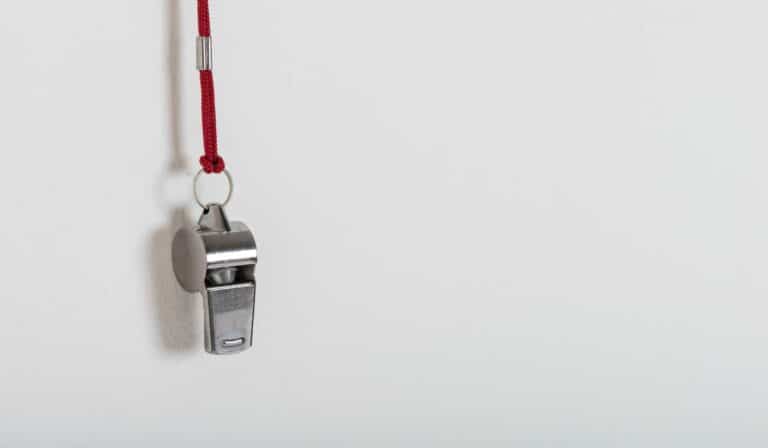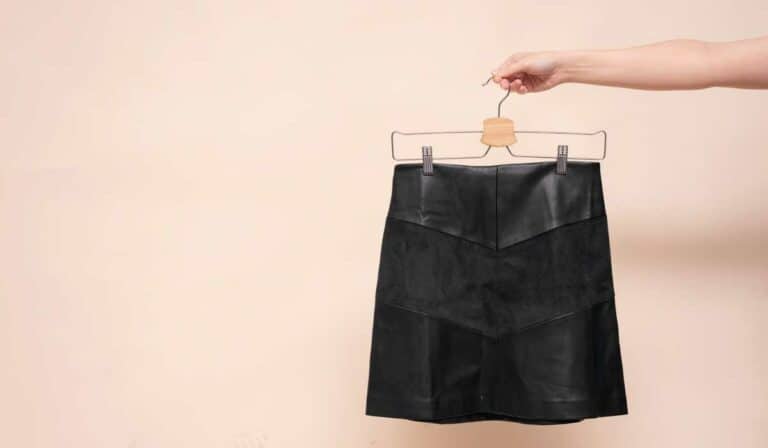What To Wear For Hiking In Summer
When it comes to what to wear for hiking in summer, selecting the appropriate types clothing and hiking gear is crucial for an enjoyable outdoor adventure. As temperatures rise, it’s essential to stay cool and comfortable while hiking through nature. In this post, we’ll explore some key tips and recommendations for choosing the best summer hiking clothes.
Fabrics that draw moisture away from the skin, promoting breathability and dryness, are essential for staying cool during hot weather hikes. Layering your clothing will also be addressed as a way to adapt easily when temperatures fluctuate throughout your hike.
Additionally, protecting your skin from harmful UV rays is extremely important when embarking on any summer hike. We’ll cover how investing in quality footwear can make all the difference in ensuring comfort and safety on various terrains. Additionally, packing a hat can provide much-needed sun protection while keeping you stylishly shaded.
Last but not least, we’ll touch upon must-have accessories like sunglasses and trekking poles that enhance your overall hiking experience during those warm months. It is essential to ensure adequate hydration when selecting attire for summer hikes; thus, we will provide some advice on keeping your body properly supplied with fluids during the journey.
Table of Contents
Choose Breathable Fabrics

When it comes to summer hiking clothes, selecting the right fabric is crucial for staying cool and comfortable during your hike. Lightweight, breathable materials are essential for keeping you dry and preventing overheating in the hot summer months. Here are some of the best fabrics to consider when choosing your hiking attire:
- Synthetic fabrics: Materials like polyester and nylon wick moisture away from your skin, allowing sweat to evaporate quickly. These super lightweight fabrics also dry rapidly if they get wet, making them perfect for warm weather hikes or unexpected rain showers.
- Merino wool: While often associated with winter hiking, merino wool is an excellent choice for summer hikes as well. This natural fiber has incredible moisture-wicking properties and breathability that help regulate body temperature even in hot conditions. Plus, merino wool socks can prevent blisters by reducing friction between your feet and shoes.
- Bamboo blends: Bamboo-based textiles offer a soft feel similar to everyday wear cotton but with superior breathability and moisture-wicking capabilities. They’re also eco-friendly since bamboo grows quickly without needing pesticides or fertilizers.
Avoid wearing dark colors while out on a hike during sunny days as they tend to absorb more heat than light-colored clothing items – stick with lighter shades that reflect sunlight instead. Opt for clothing pieces that are roomy and crafted from breathable materials, as opposed to tight-fitting apparel; this will enable airflow around your body to keep you feeling cool during the day.
If you’re unsure where to find high-quality synthetic fabric clothing options designed specifically for hikers’ needs, look no further than brands such as Patagonia, Columbia, and The North Face. These companies offer a wide range of summer hiking clothes made from breathable materials that are perfect for your next outdoor adventure.
For summer hiking, wearing fabrics that allow airflow can aid in keeping you cool and content. To further protect yourself from the elements, layering your clothing is essential.
The Key Takeaway:
When it comes to summer hiking, choosing the right fabric is essential for staying cool and comfortable. Opt for lightweight, breathable materials like synthetic fabrics (polyester and nylon), merino wool, or bamboo blends. Avoid dark colors and tight-fitting clothes that can trap heat; instead, choose loose-fitting garments made from breathable material to allow air circulation around your body. Look for high-quality hiking clothing options from brands such as Patagonia, Columbia, or The North Face.
Click here to read about Experience the Best Hikes in St George Utah Today
What To Wear For Hiking In Summer
Summer is the perfect time to hit the trails and explore the great outdoors. But before you head out on your next hiking adventure, it’s important to make sure you’re dressed appropriately for the hot summer months. Here are some tips on what to wear for hiking in summer:
Wear Layers
Layering your clothing is key to regulating your body temperature and staying comfortable on the trail during summer hikes. As you hike, temperatures can fluctuate depending on elevation, shade, and time of day. By wearing layers, you can easily add or remove clothing as needed to stay cool in hot weather or warm up when it gets chilly.
A Base Layer for Moisture Management
Your base layer should be made from a breathable material that wicks moisture away from your skin to keep you dry and prevent chafing. Synthetic fabrics like polyester are great options for this purpose because they’re super lightweight and fast-drying compared to cotton, which tends to hold onto moisture longer.
A Mid-Layer for Insulation
In colder months or high-elevation summer hikes where temperatures may drop significantly, having an insulating mid-layer is essential. Fleece jackets or vests work well as they provide warmth without adding too much bulk while still allowing air circulation between layers.
An Outer Layer for Weather Protection
Even though it’s summer, unexpected rain showers can happen at any time during outdoor adventures. Make sure you pack a light rain jacket with zippered pockets so that if the skies open up, you’re prepared. Additionally, pack a light windbreaker even if there’s no chance of rain – it will help protect against strong winds at higher elevations.
Pro Tips:
For optimal layering, wear light colors that will reflect the sun’s rays and keep you cooler on warm days. Dark colors absorb more UV rays and can make you feel hotter than necessary.
Pack a rucksack with your layers to ensure they are readily available if you need them. For optimal comfort and pleasure, it’s best to dress in appropriate layers when out on summer hikes.
The Key Takeaway:
When trekking in summer, it is wise to dress with layers that can be easily altered as the temperature shifts. A base layer made from breathable material is essential for moisture management, while a mid-layer provides insulation for colder hikes. An outer layer such as a light rain jacket and windbreaker will protect against unexpected weather conditions, and choosing light colors that reflect sunlight can help keep you cooler on hot days.
Protect Your Skin

To ensure your skin’s safety while outdoors during summer, wear sun-protective clothing with UPF ratings. Excessive exposure to the sun’s rays can have detrimental effects, such as sunburn, premature aging, and skin cancer; therefore, it is important to take protective measures when outdoors. To keep your skin safe during those hot summer months, consider investing in sun-protective clothing with UPF ratings. These specially designed garments block a significant amount of ultraviolet radiation while still allowing for breathability and comfort.
Sun Protection Tips
- Choose clothes with high UPF ratings: Look for garments that have a UPF rating of at least 30 or higher. This means they will block out around 97% of UV rays.
- Cover up: Opt for long-sleeved shirts and pants made from lightweight materials like polyester or nylon that wick moisture away from your body and dry quickly.
- Avoid dark colors: Light-colored clothing reflects sunlight better than dark colors, helping you stay cooler on hot days.
- Incorporate accessories: Sunglasses with UVA/UVB protection are crucial when spending time outdoors. Don’t forget about protecting your neck by wearing a bandana or scarf.
Besides wearing appropriate clothing items such as hiking leggings or skirts during summer hikes, remember always to apply sunscreen before heading out on an outdoor adventure. Choose a broad-spectrum sunscreen with an SPF of at least 30 and reapply every two hours (or more frequently if you’re sweating heavily). Check out this guide on how to choose the right sunscreen for your needs.
In addition to sun protection, it’s essential to be aware of the potential risks associated with high-elevation hikes. The higher you go, the stronger UV rays become due to the thinner atmosphere and increased reflection from snow or water surfaces. Be extra diligent about applying sunscreen and wearing protective clothing when hiking at high elevations.
Ensure that your skin is safeguarded while hiking in summer by donning sun protection and appropriate attire. Investing in good quality shoes can be beneficial for hikers, as they help to ensure comfort while out on the trails.
The Key Takeaway:
Protecting your skin from UV radiation is essential when out on a summer hike; wear clothing with high UPF ratings and light colors to stay cool, along with sunglasses, a bandana or scarf for neck protection, and broad-spectrum sunscreen of at least SPF 30 reapplied every two hours. Choose clothing with high UPF ratings and light colors that reflect sunlight better to stay cool on hot days. Ensure your skin is shielded from UV rays with sunglasses, a bandana or scarf for neck coverage, and broad-spectrum sunscreen of at least SPF 30 reapplied every two hours (or more if perspiring heavily).
Click here to read about Discover the Best Leash for Hiking with Dogs
Invest in Quality Footwear
High-quality hiking boots or shoes are essential for providing support and traction on uneven terrain. For summer hikes, it’s important to have shoes that offer both comfort and utility.
Selecting the Right Hiking Shoes
Choose your hiking shoes based on the type of trails you plan to explore and what feels comfortable for you. Here are some factors to consider when selecting your summer hiking footwear:
- Breathable material: Look for lightweight materials like mesh or synthetic fabrics that allow air circulation, keeping your feet cool in hot weather.
- Traction: Choose a shoe with good grip, especially if you’re planning on tackling slippery surfaces or steep inclines during your summer hikes.
- Ankle support: Depending on the difficulty of the trail, opt for either low-cut shoes (for lighter day hikes) or mid-to-high-cut boots (for more challenging backpacking trips).
- Durability: Investing in a well-made pair of hiking shoes can save you money in the long run by avoiding frequent replacements due to wear and tear.
Hiking Socks: A Crucial Companion
A great pair of hiking boots isn’t complete without proper socks. While it may be tempting to grab everyday cotton socks from your drawer before heading out, investing in quality wool or synthetic blend hiking socks can make a world of difference. Here’s why:
- Moisture-wicking: Wool and synthetic fabrics wick moisture away from your skin, helping to keep your feet dry even when you’re sweating or if it starts raining during your hike.
- Breathability: These materials allow air circulation around your feet, preventing overheating in the summer heat.
- Cushioning and support: Hiking-specific socks often have added cushioning in high-impact areas like the heel and ball of the foot for extra comfort on long treks.
Investing in quality footwear is crucial for enjoying nature while staying safe and comfortable during summer hikes. Investing in the right footwear and socks is essential for having an enjoyable and safe experience when hiking during summer.
Investing in quality footwear is essential for a successful and enjoyable hike. It can be the difference between an easy, safe journey or one filled with blisters and pain. Now let’s move on to packing a hat – something that can protect you from the sun while hiking during summer months.
The Key Takeaway:
Investing in high-quality hiking boots or shoes is essential for providing support and traction on uneven terrain during summer hikes. When selecting footwear, consider factors such as breathability, traction, ankle support, and durability. Additionally, investing in quality wool or synthetic blend hiking socks can provide moisture-wicking properties, breathability, cushioning, and support to keep your feet comfortable during long treks.
Pack a Hat

One of the most important things to consider when planning your summer hiking clothes is a hat. A wide-brimmed hat will help keep the sun off your face and neck while you’re hiking, providing much-needed shade and protection from harmful UV rays. In addition to preventing sunburns, wearing a wide-brimmed hat can help keep you cool during the hot summer months.
Selecting the Right Hat
When choosing a hat for your outdoor adventure, look for one made from breathable materials like cotton or synthetic fabrics that wick away moisture. This ensures that your head stays dry even when you’re sweating under the summer heat. Additionally, opt for light colors as they reflect sunlight better than dark colors, keeping you cool throughout your hike.
A wide-brimmed sun hat is an ideal pick for those looking to keep their head and neck area shielded from the summer heat, while a baseball cap with UPF protection can also be a suitable alternative. Alternatively, if you prefer something more compact and lightweight, a baseball cap with UPF protection can work well too – just remember to apply sunscreen on any exposed skin areas not covered by the cap.
Tips for Wearing Hats on Summer Hikes
- Pick hats with adjustable straps or bands so they stay secure on windy days or during high-elevation hikes.
- If possible, choose hats with mesh panels for added ventilation to keep your head cool.
- In case of rain showers, consider a hat made from quick-drying materials or pack a waterproof rain jacket with an attached hood.
- Remember to remove your hat when taking breaks in the shade, allowing your head to cool down and avoid overheating.
Packing a suitable hat for your summer hikes is essential for staying comfortable and protected while you enjoy nature. By selecting the right type of hat and following these tips, you’ll be well-prepared to tackle any trail under the sun.
For optimal sun protection, while hiking in summer, a wide-brimmed hat is essential. Additionally, it can provide shade and comfort when temperatures are high. To ensure you’re fully prepared, consider adding sunglasses or sunscreen to your hiking gear for extra protection.
The Key Takeaway:
For summer hikes, donning a cap is essential to shield your visage and neck from dangerous UV radiation. Look for hats made of breathable materials with light colors that reflect sunlight better. Choose adjustable hats with mesh panels for added ventilation, remove them during breaks in the shade, and pack waterproof options if needed.
Click here to read about Waterfall Hikes in Bend Oregon
Don’t Forget the Accessories
While summer hiking clothes are essential for a comfortable outdoor adventure, it’s also important to pack the right accessories to ensure you stay safe and enjoy your hike even more. Essentials such as shades, sunblock, and bug spray should not be overlooked.
Sunglasses
Your peepers require shielding from the sun’s rays just as much as your skin does. A good pair of sunglasses will shield your eyes from harmful UV rays while reducing glare on sunny days. Look for polarized lenses that block 100% of UVA and UVB rays for maximum protection.
Sunscreen
No matter how well you cover up with clothing, some parts of your body may still be exposed to the sun during the hot summer months. To avoid painful sunburns or long-term skin damage, apply a broad-spectrum sunscreen with an SPF of at least 30 before heading out on your hike – don’t forget to reapply every two hours.
Insect Repellent
Bugs can quickly turn a pleasant day hiking into an irritating experience if you’re not prepared. Keep bugs away by using an insect repellent with DEET or picaridin for maximum protection against mosquitoes and ticks. Choose one containing DEET or picaridin for best results against mosquitoes and ticks.
Pro Tip: Pack these accessories in a day pack with zippered pockets for easy access during your hike.
In addition to these essential accessories, consider bringing along some extra items that can make your summer hikes even more enjoyable. Bringing a waterproof jacket and moisture-wicking socks will ensure you stay dry and comfortable during your hike. Pack some grub and lots of H2O to stay alert and quenched while out on the track.
When it comes to accessories, make sure you have all the necessary items for a safe and enjoyable hike. This includes sunscreen, insect repellent, sunglasses, and a hat. Now that we’ve discussed accessories let’s move on to staying hydrated during your summer hikes.
Stay Hydrated

To ensure a successful summer hike, one must remember to stay hydrated. As you trek through nature, your body will be working hard to keep cool and maintain a comfortable temperature. This means that you’ll need to drink plenty of water throughout your outdoor adventure.
Tips for Staying Hydrated on Summer Hikes
- Carry enough water: It’s essential to bring an adequate amount of water with you on any hike, especially during hot weather. A general rule is to carry at least one liter (32 ounces) per person for every two hours of hiking.
- Use a hydration system: Consider investing in a hydration system, such as a backpack with an integrated bladder or reservoir, which makes it easier and more convenient to sip water while on the move.
- Sip regularly: Instead of waiting until you’re thirsty, take small sips frequently throughout your hike. This helps ensure consistent hydration levels and reduces the risk of dehydration-related issues like cramps or heat exhaustion.
- Add electrolytes: When sweating heavily during summer hikes, consider adding electrolyte tablets or powders to your water supply – these can help replace lost minerals like sodium and potassium which are crucial for maintaining proper fluid balance within our bodies.
- Avoid caffeine & alcohol: Caffeinated beverages like coffee or tea can act as diuretics causing increased urine production and leading to dehydration; similarly, consuming alcoholic drinks before embarking on day hiking may impair judgment & increase thirst sensation. Stick to water or electrolyte-enhanced drinks for optimal hydration.
Remember, staying hydrated is crucial not only for your comfort but also for your safety. Lack of hydration can have serious repercussions, including heat exhaustion, heatstroke, and hyponatremia. Be sure to equip yourself with enough H2O and the info you need for keeping your body hydrated while hiking in summer.
The Key Takeaway:
Staying hydrated is crucial when hiking in the summer months. Bring enough water, use a hydration system, sip regularly, add electrolytes, and avoid caffeine & alcohol to ensure consistent hydration levels and reduce the risk of dehydration-related issues like cramps or heat exhaustion. Remember: “hydrate or die-drate”.
FAQs about What to Wear for Hiking in the Summer
What to Wear for Hiking in the Summer?
Here are some tips on what to wear for summer hikes:
Top and Bottom
Choose lightweight, breathable fabrics like moisture-wicking polyester or merino wool for your tops and bottoms. This will help regulate your body temperature and keep you dry. Avoid cotton as it retains moisture and can make you feel uncomfortable. Opt for quick-drying shorts or convertible pants, a comfortable sports bra, and a sun-protective hat.
Footwear
Invest in quality footwear such as hiking shoes or boots with good ankle support. Look for shoes with sturdy sole that provides ample traction on various terrains. Make sure to break in your shoes before your hike to avoid blisters and discomfort.
Accessories
Accessories like hats, sunglasses, and gloves can enhance your comfort during the hike. Choose a hat that provides shade and protects your face and neck from the sun. Sunglasses will protect your eyes from harmful UV rays, and gloves will protect your hands from scratches and blisters.
Importance of Clothing in Hiking?
Clothing plays a crucial role in ensuring hikers’ safety and comfort during outdoor adventures. Proper attire helps regulate body temperature by wicking away sweat while providing protection against harsh elements such as sun exposure, rainstorms, cold weather, insect bites, allergens, and abrasive terrain.
Shorts or Pants?
In summer hikes where temperatures are high and there’s a low risk of insect bites or scratches from vegetation, wearing shorts made of lightweight material can be more comfortable due to better airflow. However, consider wearing convertible pants that offer versatility by converting them into shorts when necessary.
By choosing the right summer hiking clothes, you’ll be able to enjoy nature while staying cool and comfortable. Don’t forget to pack a rain jacket and a day pack with zippered pockets for your essentials. Happy hiking.
Conclusion
In conclusion, to stay comfortable while trekking in the summertime, it is recommended to opt for breathable materials and wear multiple layers. Protecting your skin with sunscreen and investing in quality footwear are also essential for a successful hike. Don’t forget to pack a hat and accessories like sunglasses and a lightweight backpack. And most importantly, staying hydrated throughout the hike is crucial.







